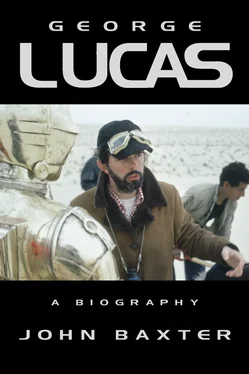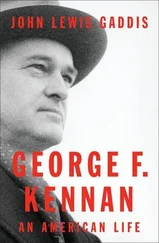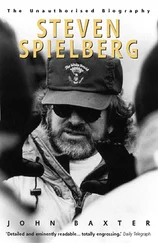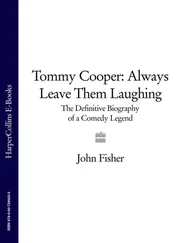Industrial Light and Magic, founded by Lucas in suburban Los Angeles in 1975 to produce the special effects for Star Wars , was now worth $350 million, and had become the world’s premier provider of movie special effects. It created Jurassic Park’s dinosaurs and arranged for Tom Hanks to shake hands with Jack Kennedy in Forrest Gump . THX Sound, developed by Lucas engineers, was gaining ground in theaters across the world, and his recording complex, Skywalker Sound, had a reputation as the best in America. LucasArts Games, LucasArts Learning … Whatever George Lucas touched turned to gold. And the gold stuck to his fingers. No financial pages listed these companies. Lucas owned every share of stock himself.
That the staid Sierra Club trusted him with its merchandising wasn’t surprising. Lucas radiated probity – too much probity, thought some. Though the movie journal Millimetre lauded Lucasfilm as ‘a profitable multi-departmental corporation that defines the cutting edge of American film-making,’ the Boston Globe detected an omnipresent fogey-ism in its creations. A Lucas production, it wrote, ‘always seems to be about something like pre-war adventurers or pre-Vietnam teenagers or pre-television broadcasting. Even Star Wars is set in the far past, not the far future, and its style famously turned American movies back to old-fashioned (critics say old-hat) narrative strategies.’
Few of the people who distributed Lucasfilms’ products, worked on them, bought or sold their merchandise or otherwise derived a living from the group, had any such criticisms. True, British actress Jean Marsh, who played Queen Bavmorda in the fantasy Willow , did remark tartly that none of its actors relished being merchandised – ‘We would all pay not to be on the T-shirts and things’ – but she was in the minority. Most felt that, as long as it filled the coffers, Lucas could dramatize Pollyanna , or film Aesop’s Fables .
The cars took at least thirty minutes to skirt downtown San Francisco, cross the sweep of the Golden Gate Bridge, with giant tankers creeping out to sea so far below that they looked like models in a special-effects sequence, and climb the curve of the cliff onto Highway 101, the sole autoroute north into Marin County, and another world.
The social misfits and renegades who fled here in the late sixties, seeking to preserve the spirit of the Summer of Love from a San Francisco inhabited by panhandlers, dope addicts, porn-movie producers, and prostitutes, discovered a haven in old and sleepy towns like San Anselmo, San Rafael, Mill Valley, and Bonitas. Locals found themselves patronizing the hardware store along with long-haired, bearded men, ethereal-looking women in ground-brushing muslin, and barefoot babies. Teepees and geodesic domes mushroomed in the woods, fringed by private gardens of organic vegetables, with, just a few yards down the track, a patch of marijuana, exclusively for private use.
To the relief of locals, the newcomers weren’t particularly anxious to share their new lifestyle. When the town council of Bonitas, on the Pacific Coast, erected signs saying ‘Welcome to Bonitas,’ the hippies took them down. Most felt they already had just as many friends and neighbors as they needed. ‘The ideal in those days,’ said one refugee from the midwest who briefly settled there in the 1970s, ‘was a narrow road winding through the woods without any signs, and a little house at the end. I couldn’t stand it. That’s no way to live – without people. I moved to San Francisco.’
Sausalito, just across the Golden Gate, gave the first clue to Lucas’s guests that they’d moved into this new world. Once San Francisco’s yacht port, a cluster of boatyards and little dockside bars, its waterside warehouses now belonged to companies making models for movies, or sound designers like Ear Circus, the company of Randy Thom, who’d won an Oscar for the sound recording of Francis Ford Coppola’s Apocalypse Now , and who’d worked too on Lucas’s ill-starred production Howard the Duck .
Thom, large, bear-like, and, like most of the people behind the scenes of special-effects films, shy and soft-spoken, was also on the road, heading north to the ranch. He’d had an office there while he was working on Howard the Duck , but after that he’d gradually moved away, until now he hardly visited the place. Like a lot of people who’d joined Lucasfilm in the heady days of its crusading energy, he’d made his own way. Except for Dennis Muren, now head of Industrial Light and Magic, none of the people who’d started ILM under John Dykstra still had jobs there. Nor did most of those who worked on Star Wars in other capacities .
Lucas’s wife Marcia had gone too, divorcing him in 1983. It surprised many people that the marriage had lasted so long. Marcia edited Lucas’s early films, and was good enough to be asked by Martin Scorsese to cut Alice Doesn’t Live Here Any More, Taxi Driver , and New York New York . In George’s conflicts with the studios and with Francis Coppola, she’d remained loyal, even when she didn’t share her husband’s obsession. Life with George was no picnic. The narrowness of his vision could be overpowering. ‘I heard this story,’ says Harley Cokeliss, second-unit director on The Empire Strikes Back , ‘that Marcia wanted a particular painting for her birthday. She dropped hints and dropped hints and dropped hints, until she was sure even George had got the message. On her birthday, he said, “I’ve got a nice surprise for you.” As Marcia looked around for her painting, George said, “I’m going to have the roof fixed.”’
John Milius was on the road, and wondering why he bothered. He and George went back longer than almost anyone. Before Star Wars , before American Graffiti and THX1138 , back to 1963, when Lucas was a weedy, close-mouthed kid from upstate California, sitting through the same courses at the film school of the University of Southern California. In the famous malapropism of producer Samuel Goldwyn, they had all passed a lot of water since then – and, in Milius’s case, put on a lot of weight. Except that his beard was gray, George still looked the same. But then, he would probably look the same when another twenty years had passed.
Milius assumed that their oldest mutual friend Francis Coppola wouldn’t be at the cook-out. The excuse would be the standard one – he was on location on some film. But everyone knew that the two men were no longer close, and that, even though Coppola’s vineyards were only a twenty-minute drive from the ranch, George and he seldom saw one another. With Lucas, some rivalries never went away: ‘I bear grudges,’ he has said.
Coppola had led the move away from Los Angeles. His company American Zoetrope in San Francisco was meant to create a new Hollywood in Marin County. For a while after its collapse, Milius and the rest of the group half-believed that Lucas might pick up where Coppola left off. The mansion he and Marcia bought on Parkway in San Anselmo as headquarters for Lucasfilm might have been the beginning of an atelier , a collaborative film enterprise like Laterna, the Swedish studio-in-a-mansion which inspired Francis to found Zoetrope. But once Star Wars started earning, George bought the 1700-acre Bulltail Ranch. In 1979, he received planning permission to begin creating Skywalker.
The ranch, Lucas explained, would give him the freedom to make ‘my little films,’ abstract, experimental films that would ‘show emotions.’ Star Wars , he insisted, was only a means to an end. It would buy his way out of big-time cinema. He envisaged a ‘retreat [with] a rich Victorian character, [containing] film-research and special-effects facilities, art/writing rooms, screening rooms, film-editing areas, film libraries, a small guesthouse, and a recreation area complete with handball courts, tennis courts, and a swimming pool.’ His scheme would use only 5 percent of the land area, he said; the rest would remain agricultural.
Читать дальше












